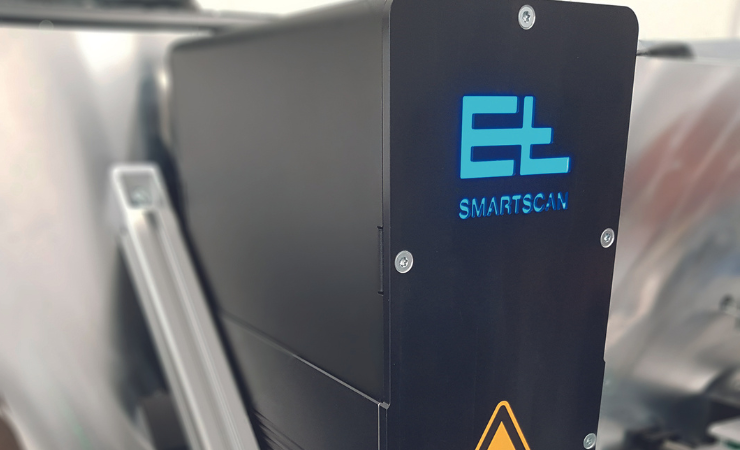Erhardt+Leimer (E+L) has updated its Smartscan 200% print image inspection technology to make it faster and more compact, ‘evolving into something very close to a high-end system,’ according to product manager Alexander Thomalla.
This has seen the mechanical concept of Smartscan completely revised. For example, faster LEDs and an optimised lighting concept are claimed to deliver ‘even better’ image quality. The reflection module for displaying reflective, usually metal-coated materials or finishing foils is now included as standard, as is the exchangeable background panel for transparent materials. The height of the camera units has been ‘significantly’ reduced and a new installation concept makes integration in printing machines or rewinders easier.
Optimised and enhanced software features new defect detection algorithms that spot defects with a higher degree of reliability. The same applies to the defect classification system, which assigns defects to categories such as missing label, unremoved matrix, print error or glue joint. Further defect classes such as barcode or incorrect length are also available. Improvements have also been made to the detection of hole defects and to the illumination of fluorescent materials.
Further, the new generation of Smartscan is now available in widths of 660mm and 760mm, up from the previously available maximum width of 560mm.
Mr Thomalla commented, ‘Smartscan – or the MIS2 model to be more specific – is now faster and more compact and it has a new design. On the variant with 2K resolution, we have already been able to achieve speeds of up to 600m/min. But the 4K variant is catching up, and is now reaching speeds of up to 400m/min.
‘With this latest incarnation, we have to concede that the system has now moved a long way from the basic idea of an entry-level system. Smartscan was originally conceived as a cost-effective inspection system for simple applications, but now it has evolved into something very close to a high-end system. The gap in terms of functionality is becoming ever smaller. But the price advantage remains unchanged.’




